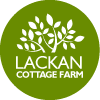
The walls lined with 100mm woodfibre board. We already experimented by insulated the roof with Knauf Earthwool board – a rockwool product. It will be interesting to see how the products compare
When it came to refitting the interior of our little cottage – number 81 – we face a different set of challenges to those we encountered here in 79. The little cottage is primarily concrete block built, and cement rendered, so it isn’t the most breathable structure. Added to this, the walls are either solid, or a very basic form of cavity with no insulation whatsoever. One saving grace is that the inside of the walls are dry.
The solution? Well we knew that we wanted to avoid PIR – (polyisocyanurate) insulation, such as Celotex or Kingspan. The boards are made from pretty unpleasant chemicals, produce noxious dust when cut, and there are a lot of stories about them shrinking over time, creating all sorts of issues. Plus they are foil backed, so lining a home with them creates a giant foil bag, from which microwaves generated by phones, wireless internet etc cannot escape.
So we turned to Homatherm woodfibre insulation. It is basically just compressed woodfibre, is non toxic, has good U values, and allows the building structure to breathe. Depending on the wall, we have used between 100 – 180mm on external walls, and 40mm on the new insulated cavity walls. It is attached directly to the inside of the walls using very long screws, and large plastic washers. Fixing the boards is a bit fiddly because of the thickness, but really not too bad, and we did a couple of rooms in a day.

Insulated walls lined with vapour layer, and the window reveals lined and taped to ensure that they are draught free.
Because the exterior of our building isn’t breathable, we have to have a vapour barrier on the warm (inside) side of the insulation. This is because just as the insulation keeps the room warm, it will keep the wall cold. If warm air from the room meets the cold surface of the concrete wall, it will condense, cause damp, and all manner of terrible mould related horrors.
We didn’t really want to wrap the house in a plastic bag, and so have used a product called Pro Clima DB+, which is made largely from recycled paper, and is designed to prevent moisture entering the insulation, whilst enabling any moisture coming from within the wall to escape. Clever stuff, and we hope it performs as it should. This layer is carefully sealed with tape to prevent leaks.
Next we have 25mm battens, which will provide a gap in which services (electrics) will be run, without having to make holes in the vapour barrier. These we attached through the insulation using 150mm frame fixings, which were the only things we could find that were long enough.
 The next layer is Celenit wood wool board. It is moisture, rodent and fire proof, and is made from fir-wood strips, and a little portand cement which acts as a binder. It provides a great base for lime plaster, and is held in place using the same wide plastic washers as the insulation. It is also breathable, so moisture will be able to escape from the wall structure through it.
The next layer is Celenit wood wool board. It is moisture, rodent and fire proof, and is made from fir-wood strips, and a little portand cement which acts as a binder. It provides a great base for lime plaster, and is held in place using the same wide plastic washers as the insulation. It is also breathable, so moisture will be able to escape from the wall structure through it.







